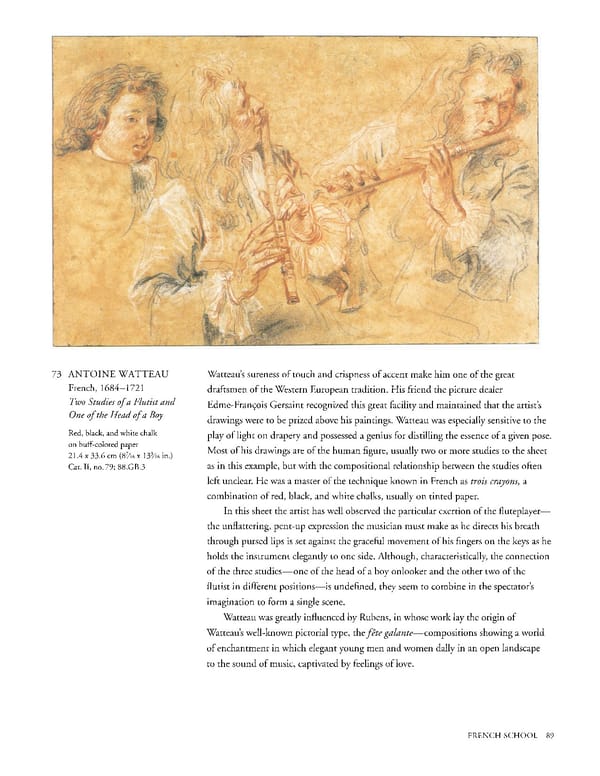73 ANTOINE WATTEAU Watteau's sureness of touch and crispness of accent make him one of the great French, 16841721 draftsmen of the Western European tradition. His friend the picture dealer Two Studies of a Flutist and EdmeFrancois Gersaint recognized this great facility and maintained that the artist's One of the Head of a Boy drawings were to be prized above his paintings. Watteau was especially sensitive to the Red, black, and white chalk play of light on drapery and possessed a genius for distilling the essence of a given pose. on buffcolored paper Most of his drawings are of the human figure, usually two or more studies to the sheet 21.4 x 33.6 cm (8 7/16 x 13 3/16 in.) Cat. II, no. 79; 88.GB.3 as in this example, but with the compositional relationship between the studies often left unclear. He was a master of the technique known in French as trois crayons, a combination of red, black, and white chalks, usually on tinted paper. In this sheet the artist has well observed the particular exertion of the fluteplayer— the unflattering, pentup expression the musician must make as he directs his breath through pursed lips is set against the graceful movement of his fingers on the keys as he holds the instrument elegantly to one side. Although, characteristically, the connection of the three studies—one of the head of a boy onlooker and the other two of the flutist in different positions—is undefined, they seem to combine in the spectator's imagination to form a single scene. Watteau was greatly influenced by Rubens, in whose work lay the origin of Watteau's wellknown pictorial type, the fete galante—compositions showing a world of enchantment in which elegant young men and women dally in an open landscape to the sound of music, captivated by feelings of love. FRENCH SCHOOL 89
 Masterpieces of the Getty Museum: Drawings Page 89 Page 91
Masterpieces of the Getty Museum: Drawings Page 89 Page 91